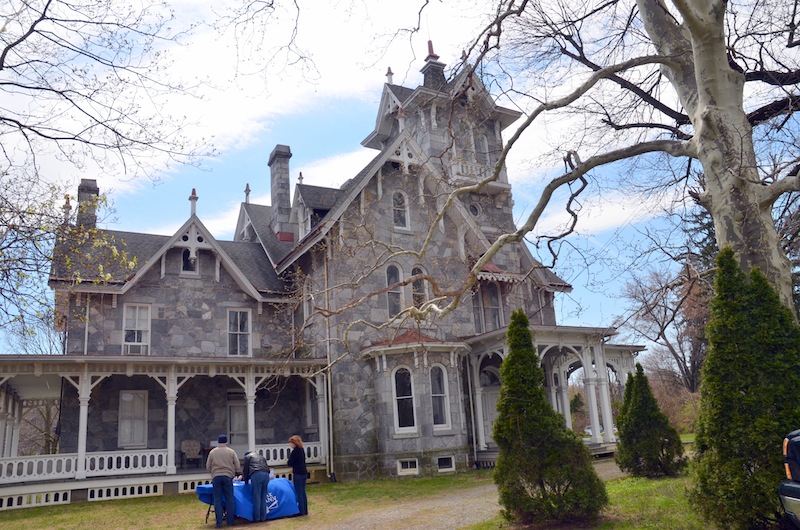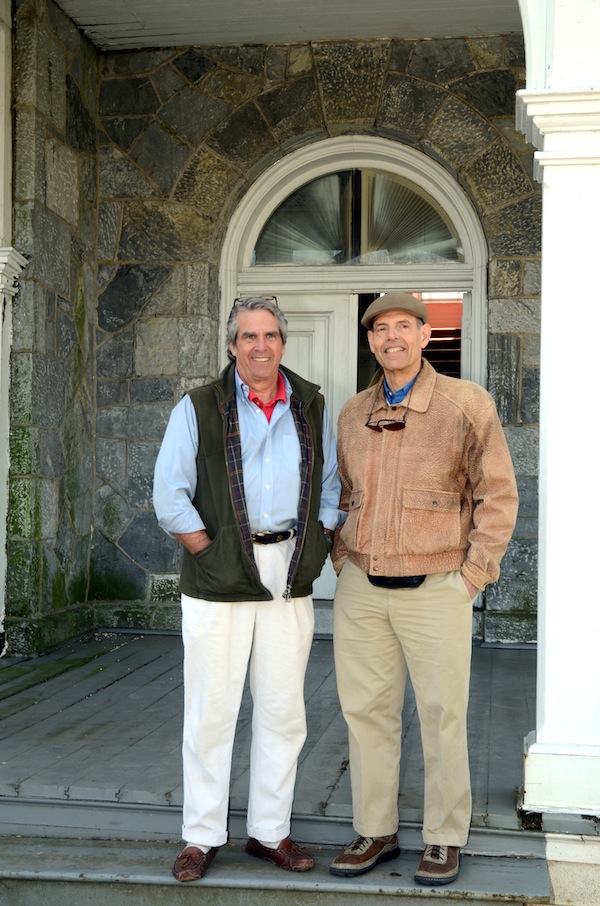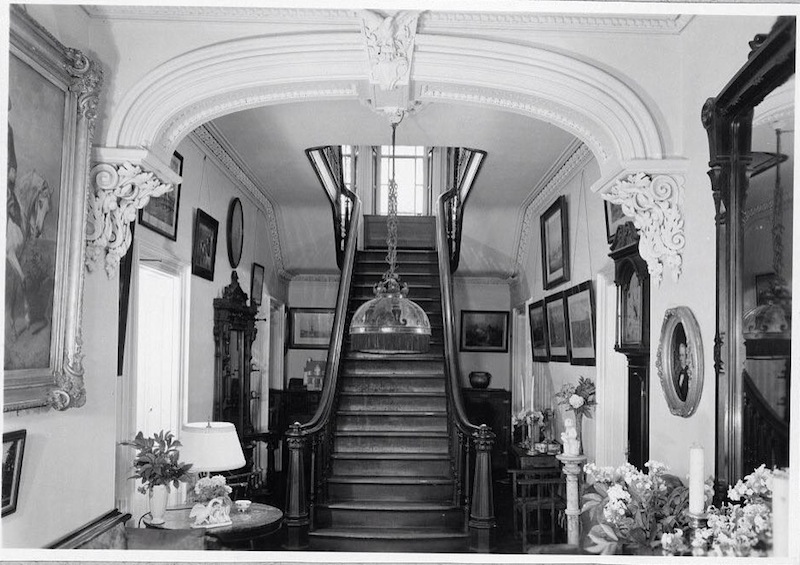
Novelist Jessica Knoll and the book jacket of her debut bestseller, now out in paperback. (Photo by Leslie Hassler)
We all thought Villa Maria and Shipley alum Jessica Knoll was living the dream.
Her Gone Girl-esque debut thriller, Luckiest Girl Alive, was an award-winning bestseller.
Reese Witherspoon signed on to produce the movie; Knoll wrote the screenplay.
Her publisher – Simon & Schuster, no less – green lit a second novel, due to drop in spring 2017.
Knoll had made it in magazines, too, landing coveted senior editor jobs at Cosmo and Self.
Oh, and she was attractive and happily married, too.
At 32, she was, well, the luckiest girl alive, right?
No and yes.
Two weeks ago, Jessica Knoll dropped a bomb.
She published an essay admitting for the first time that the horrific gang rape in her 2015 novel was based on her own experiences.
After denying it for nearly year, she came clean: “TifAni FaNelli” at the “Bradley School” was Jessica Knoll at Shipley.
When she was 15, Knoll got blackout-drunk at a party, she wrote in Lenny, an online newsletter for young women.
She awoke at different times – but was still out of it – to find herself being raped by three boys.
Only Knoll – and everyone else – never called it rape.
Instead, she was taunted.
Classmates scrawled “trash slut” in her locker.
Jokes circulated at her expense.
A Shipley teacher used the example “Jessica, a cheap mall rat” to demonstrate an appositive clause in a grammar lesson.
Even the female doc who gave her the morning-after pill said she “wasn’t qualified to say” if what Knoll had described to her was rape.
Seventeen years later, Knoll knows it was. And is shouting it from the rooftops.
“This moment is about me standing up for myself for the first time,” Knoll told SAVVY in a recent phone interview. “If I hadn’t done this I would have NEVER stood up for myself.”
Knoll said she is “in therapy in earnest over the last few months,” sorting out the “toxic” anger she still feels, the shame she still fights.
At first, creating Ani’s character was cathartic.
“Her embittered angry but vulnerable voice just poured out of me,” she said. But “it just got to the point where it didn’t feel very good to meet readers and to dodge their questions about whether any of their own experiences were similar to what Ani had been through… Whatever good was done in those few months was undone because I was backtracking a little. I wasn’t being forthcoming.”
Now that she’s outed herself as a victim of gang rape, she feels reborn. “What’s really been cathartic now is having the essay received the way it’s been received, reading all these wonderful messages of support and feeling like I don’t have anything to hide,” Knoll said.
Her similarities to Ani go only so far, she told SAVVY.
Ani’s social-climbing, toddlers-and-tiaras stage mother, for example, is nothing like her own mother.
Ani (aka TifAni FaNelli) was of Italian/Irish descent; Knoll’s family is German.
But both Ani and Jessica felt like outliers at their Main Line private high schools, in part because they didn’t live on the Main Line. (Both were from Chester Springs.)
Raised Catholic, Knoll attended Villa Maria Academy in Malvern since kindergarten (Mt. St. Theresa’s in Malvern in the book). In eighth grade, Knoll begged her parents to send her elsewhere for high school.
“I was a bit of a rabble rouser and Villa wasn’t a good fit for me,” she said, laughing at the memory. “I was a vegetarian; I believed in women’s rights and I thought that it was bullshit that you would go to hell if you had sex before marriage.”
Shipley, she says, was “more artistic” and “a better fit.” Although its layout is mirrored almost exactly in the novel’s Bradley School, Shipley wasn’t quite as concerned with social class.
“The kids at Shipley are like prep school hippies, so I never found Shipley to be a very showy type of school.”
After the rape, high school was “a difficult time,” she allowed. “It’s not to say I didn’t have friends or that I wasn’t social and I didn’t have a life. I had all those things. But I definitely had a reputation that followed me. I felt I had to defer to certain people, bite my tongue when I wish I would have spoken up.”
To their credit, several Shipley classmates have reached out since the essay was published. “They’re saying ‘I’m sorry you were stuck with that slut handle and that I was part of the community that labeled you.’”
But Knoll’s not playing the blame game. “Pointing fingers is a waste of time. The people I’m hearing from were good eggs back then and they’re good eggs now. I tell them, ‘You didn’t do anything wrong. You were 15-year-old kids. It’s hard to do the right thing when you’re a teenager. What matters now is that we are kind, compassionate people and we can have these conversations.’”
She hasn’t heard a peep from anyone who was part of the crowd that “did hurtful things to her in the aftermath” and “would be shocked” if she ever did.
Knoll did her best to bury the trauma. But over time, it sparked a consuming ambition: to fit in, measure up, look good.
Knoll’s hyper-awareness of social standing and appearance “probably started on the Main Line” but came into full flower in college and beyond.
She majored in English at Hobart and William Smith Colleges (Class of ’06) where “all of a sudden it was really important whether you went to public school or private school, where you summered and popping your collar and all of that.”
When she moved to Manhattan, there was “a different kind of aspiration in terms of fitting in … There was always this feeling like I was behind, and I was always trying to catch up. What was I wearing, doing or saying that was outing me?”
Like her fictional surrogate, Knoll was a skilled mimic. “It got to be really tiring and that really came through in the book: the pure exhaustion of trying to keep up appearances and trying to keep up with everyone because it never stops. I could never be happy with myself, with what I had or who I was. That was something I tried to work out in this story and with Ani.”
To other survivors, Knoll’s message is this: You have nothing to be ashamed of.
“One thing my therapist has been really clear about is that not talking about this is what gives it that shame. … She told me, ‘You didn’t have a voice back then but you have a voice now. If you use your voice, you will feel empowered. You will feel strong.’”
As she wrote so beautifully in Lenny, “Healing will come when I snuff out the shame, when I rip the shroud off the truth.”
Luckiest Girl Alive came out in paperback last week.
To promote it, Knoll is currently on a 16-city national book tour that doesn’t include Philly or the Main Line. The junket was planned by her publishing company and the local snub was not intentional, she said.
Still, wherever she goes, whichever readers she talks to, she’s doing it with a load off her back and a lightness in her step.
“I don’t have to do this dance any more. I can be completely candid.” Knoll said. “That’s a very freeing thing,”
We’ve been thinking a lot about truth here at SAVVY lately, about pulling back the veneers, lifting the shrouds.
Not just about brave novelists like Jessica Knoll but regular Main Line folks, too: Parents who’ve buried children (the Monaghans, the Maxwells, the Naibs, the Campbells, the Deckers, the McCloskeys/Randels) and talked openly about what went wrong.
[And yes, the tragedies keep on coming. A 22-year-old former Malvern Prep water polo star, a 33-year-old Episcopal Academy alum father of twin toddlers, and a 22-year-old Cabrini lacrosse player all died of suspected accidental drug overdoses in the last eight days.]
We’re thinking, too, about the special kind of courage it takes to reveal your weakness or disease, to publicly take ownership of your decisions, to share your story so that another might learn … and live.
We’ve already introduced you to recovering alcoholic/addict Reilly McCloskey, who shouldn’t have had to eulogize his own brother after he OD’d last week. For the record, Reilly delivered a heartfelt, tearful tribute to a full house at Wayne Presbyterian Church, ending with a plea to young people in the crowd to get help “today, not tomorrow” if they’re struggling with addiction.
But we haven’t yet told you about another remarkable young woman and friend. A Berwyn mother of three, former attorney and devout Christian, Leah Carpenter Raup wrote a heart-wrenching essay about the abortion she had 15 years ago on her blog, Unbored Housewife. Doubly strong, she’ll also speak about it at her church, Wayne’s Church of the Saviour, in a May 7 breakfast presentation, “Bringing Darkness into Light – The Healing Power of Public Confession.”
Leah’s admission had nothing to do with politics and everything to do with helping others heal. “Not all post-abortive women grieve, but many do,” Leah tells SAVVY. “They don’t know what to do with their pain, so they keep it hidden in darkness. I have found deep healing through the public confession of my abortion, which afforded me the opportunity to assure other women that they are not alone in their grief.” To register for Leah’s talk, click here.
No doubt Leah and Jessica would approve of Lower Merion High School’s upcoming Girls Leadership Conference. Unique among public schools in the region, the April 23 event will focus on developing girls’ empowerment and leadership skills. College student mentors, alumnae and professional women will tackle broad issues like gender differences and discrimination in the workplace along with concrete stuff like negotiating, money management, assertiveness and stress reduction through mindfulness. It’s the third conference organized by the district’s Girls Leadership Council. Only Harriton and Lower Merion students can attend and must pre-register by April 21.
If you like crazy-cool historic houses, do yourself a favor and tour Loch Aerie in Malvern this Wednesday, April 13 (noon to 2).
It might be your last chance.
Designed by renowned Quaker architect Addison Hutton and built over four years, 1865 to 1868, for a quarter million (BIG bucks back then), it will be auctioned off April 21.

Loch Aerie in Malvern during a recent open house. (Photo by Carla Zambelli)
Longtime owners are the Tabas family, as in the Royal Bank Tabases of Lower Merion who also brought us Twelve Caesars on City Line and Mickey Rooney’s Tabas Hotel in Downingtown.

Former Harriton classmates Bill Scudder and Lee Tabas at Loch Aerie. Scudder volunteers with the county historical society and the Tabas family has owned the estate since 1967. (Photo by Carla Zambelli)
After 50 years, they’re ready to unload Loch Aerie and say they’ll accept a winning bid as low as $250,000.
Which would be a STEAL for this nearly 6,000 sq. ft Irish Gothic beauty on two acres. (Alpine roofs! Chalet dormers! High Victorian millwork! 13-14 ft. ceilings! Original stained glass, pocket doors and fireplaces galore! Chester Valley views!)

The grand foyer of Loch Aerie in happier days. (CC Historical Society/Library of Congress photo)
A big chunk of the original estate was already sold to Home Depot, visible (sadly) now from the cupola. The Sheraton Great Valley Hotel sits directly across Route 30.
Here’s hoping whoever ponies up has a grand plan to save the old lady. A B & B with a first-floor restaurant/pub or a mini-museum sound divine. Heck, we’ll even take an office building.
The East Whiteland Historical Commission, the Chester County Historical Society, Chester County blogger/photographer Carla Zambelli and others will croak if Loch Aerie suffers the same fate as the Hutton-designed Old Main at West Chester U., razed in 1971. “Over my dead body” will Loch Aerie be bulldozed, proclaimed the historical commission chair to the Inquirer.
Admittedly, the place needs boatloads of work and its history includes a 1973 shootout with cops involving squatting Warlocks and their Pagan rivals. Second-story floorboards still bear motorcycle treads.
Still, many say it’s a shoo-in for the National Register of Historic Places.
Architect Hutton’s handiwork is all over the Main Line, BTW, in a slew of private homes and institutions like Bryn Mawr College, Shipley, Haverford and Villanova.
About 100 people have toured Loch Aerie during two recent open houses. We suggest you do the same or, better yet, pass along this golden-oldie real estate opportunity to an investor/preservationist near you.
Speaking of oldies but goodies, the Philadelphia Antiques & Art Show sails into the Navy Yard this weekend.
And we’re planning to tack south, too.
Because this is NOT your mother’s antiques show, folks.
Sure, it’s still one of the country’s finest Americana shows, but this time out, dealers will show contemporary art. Yup, you heard that right.
Show co-chair Anne Hamilton told the Huffington Post it was her own grown kids who convinced her to make the change. Younger peeps don’t want a house full of antique furniture these days but they’re bonkers for art, Hamilton says. Plus, it’s hip to mix and match styles.
In other words, one genuine piece of art can elevate a roomful of Ikea.
GO FOR IT! The Philadelphia Antiques & Art Show runs April 15-17, 9 a.m. – 8:15 p.m. (5:15 on Sunday), at the Marine Parade Grounds at the Navy Yard. Complimentary shuttle from 30th St. Station every half hour. Art/antiques prices start at $100. Admission is $20. Proceeds benefit the Penn Acute Research Collaboration at Penn Medicine.
Last Monday was the 25th anniversary of the Main Line’s “where were you when” moment: the freak midair crash at Merion Elementary that killed U.S. Senator John Heinz and six others. Click here to read Main Line Media News editor Susan Greenspon’s touching reflection on Thursday, April 4, 1991.
How’s this for a bargain? Pay ten bucks (or whatever you please) and fill a bag with your choice of kids’ hand-me-downs. Tredyffrin & Easttown Care (better known as T & E Care) will host its annual Kids’ Clothing Grab Bag fundraiser this Friday, April 15, 2 – 6 p.m, and Sat. April 16, 9 a.m. to noon at St. Matthews United Methodist Church on Walker Road in Wayne. Recycling … for all the right reasons.
And while we’re on conservation of resources, get to know the Main Line’s many cool, preserved open spaces with Molly Morrison, president of Natural Lands Trust. She’ll be speaking at the Wayne Art Center, last in this year’s speaker series, this Wed. April 13. Buy tickets at Wayneart.org.
And finally, two SAVVY shoutouts: The first to Lalitha Trivikram, the Malvern physician/hero on board the Amtrak train that crashed in Chester April 3 who rushed to help the injured – 30 of whom were hospitalized – before EMTs arrived.

Facebook photo from Dr. Trivikram’s appearance on GMA.
“You take a deep breath, you mutter a little prayer saying that I hope to God that I can handle whatever it is that comes my way and you dig right in,” the good doctor told “Good Morning America.”
Shoutout #2 goes to Villanova Men’s Basketball Coach Jay Wright. Not because your Wildcats won the national championship. Not because you handled it all with your usual grace, class and fine tailoring.
No, we’re giving you props for this: In a week when you’re at the epicenter of the sports universe, you go about your business. Like showing up in jeans and a puffy jacket at the Sunday night Youth Mass at St. Norbert in Paoli.
Nice seeing you, Jay. And we completely get why you duck out after Communion. With Nova faithful filling the pews (and on the altar), we’d run for cover, too.
I am so sorry for Leah Raup – that she has been unable to reconcile her decision to abort her pregnancy 14 years ago. Women react in different ways, fortunately.
I – and girlfriends of mine who also got abortions in the 80s – feel no shame or guilt. We are grateful that the procedure was, still is and will always be safe and legal. We went on, a decade after our abortions, to get married and have children – on our own terms. Our only reminders of the abortions are at the OB/GYNs office, when we have to fill in the blank about how many pregnancies we’ve had.
I hope Leah Raup finds peace. She needs to remember if she hadn’t aborted her fetus, she wouldn’t have the life and family she loves today.
As always, thank you for such a thought provoking local news site.